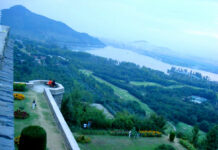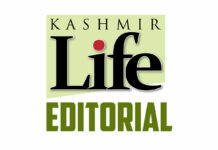Dr. Bashir A. Dabla
It was reported in 1990 that there were about 1,50,000 soldiers stationed in Kashmir, i.e. about 17 soldiers per square mile and one soldier for every 17 civilians. Subsequently, an independent estimate in 1994 put the soldiers’ number in Kashmir to 4,00,000 which represented just under half or 44 % of the total Indian army at that time. In 2004, this number was estimated between 5,00,000 to 7,00,000, or one soldier for every 10 civilians. The former Deputy Chief Minister informed the state assembly in 2006 that there were more than 6,67,000 forces personnel in the state for a population of 12 million. In 2007, the army sources gave the figure of 3, 37,000; one trooper for every 18 persons. [CONVEYOR-September 2009]. In this way Kashmir was made the “most heavily militarized zone” in the world. It was essentially in this context that the U.S. State Department’s top official characterized Kashmir as the “most dangerous spot in the world”.
This militarization had not only political, military and strategic implications but it has affected the whole life of Kashmiris involving social, cultural, psychological, economic, educational and other fields of human life.
The military-civilian relationship throughout India has remained tense and conflict-oriented often leading to violent clashes between the two. Several studies have proved this proposition. Kashmir is no exception; however, it has an added dimension- the military behave in Kashmir like an “alien force in an alien territory” and considers the entire local population as “political enemy”. In this background, military was portrayed as “occupation army”. With this image, army was found involved in all cases and kinds of human rights violations, well established by different national and international human rights organizations.
Militarization created serious obstacles and constraints for the normal functioning of family as a social institution. While its social environment and socialization processes could not be continued properly, traditional values, norms, roles, statuses, marriage practices and kinship patterns faced serious threats.
In the out-family framework, mass psychological depression, tension, stress, anxiety, PTSD and other psychological problems emerged because of inhuman treatment, torture, rude behaviour and anti-Kashmiri Muslim sentiment on the part of forces everywhere.
In the in-family environment, processes of socialization and social control suffered absolutely. Parental-patriarchal authority was found challenged which effected growth of children’s personalities. Violent attitudes activities among children were strongly noticed.
Deviance and delinquency trends dominated the youth behaviour. Criminal tendencies and drug abuse among many youngsters spread very fast. In totality, all social institutions, especially marriage, family and kinship were non-functional in functioning.
The most dangerous social implication of militarization was felt in violence against women. All women faced all types of violence from eve-teasing and molestation to rape and murder. Evidences strengthen the fact that this crime against women in Kashmir was started in an organized way by the Indian security forces at Kunan Poshpora.
Militarization has a negative effect on education in Kashmir, especially female education. In rural areas many students, especially girls, had to drop out of schools due to security reasons. Occupation of school buildings by forces also lead to significant number of drop outs. Also occupation of agricultural land, orchards and other economic installations imposed economic losses on Kashmiris.
It has given rise to cultural exclusiveness, cultural isolation and mutual antipathy in place of cultural interaction and cultural understanding between the army and local people.
In this way, militarization in Kashmir had many other negative implications for the locals, which, in the long run, will hurt the cause of peace, reconciliation and conflict resolution.
(The author teaches
at the Department of
Sociology and Social Work)









